A Comprehensive Guide to Resizing Your Ring


Intro
The process of resizing a ring can often be perplexing, especially if you’ve never delved into the world of jewelry adjustments before. Understanding the nuances of how rings are sized down is crucial for anyone who wishes to ensure their cherished items fit just right. Whether it’s a sentimental inheritance or a recent purchase that’s a tad too loose, getting the right size is pivotal for both comfort and security.
A well-sized ring not only feels better on the hand but also serves to enhance the overall aesthetic appeal, preserving the integrity of the design, especially when it holds precious gemstones. Here, we will unravel the mysteries behind this process, exploring the methods that jewelers use, the reasons behind resizing, and the considerations that need to be made.
Gemstone Overview
Definition of Gemstones
Gemstones are nature's finest creations, born from the depths of the Earth over millions of years. These minerals are often cut and polished to create beautiful pieces that catch the eye. Beyond mere beauty, gemstones carry various meanings and significances, making them cherished possessions for many.
Classification of Gemstones
Gemstones typically fall into two main categories: precious and semi-precious.
- Precious gemstones include diamonds, rubies, sapphires, and emeralds. They are often more valuable due to their rarity and status associated with them.
- Semi-precious gemstones encompass a wider array of stones like amethyst, garnet, and aquamarine. While they may be more abundant than their precious counterparts, many are still highly sought after for their unique beauty.
Moreover, gemstones can also be classified based on their composition. For instance:
- Organic Gems: Such as pearls and coral, formed from biological processes.
- Inorganic Gems: Like quartz and topaz, created through geological processes.
Understanding the classifications is essential, especially when considering the implications resizing has on the ring’s design and stone settings.
Historical Significance
Origins of Gemstone Use
The history of gemstones dates back thousands of years. From ancient Egyptian pharaohs adorning themselves with lapis lazuli, to the decorative choices made by Roman emperors, gemstones have always held a valued place in society. Their allure has transcended cultures and eras, often symbolizing power, wealth, and status.
Cultural Insights: Gemstones in Ancient Civilizations
In many civilizations, gemstones were more than mere adornments. They were believed to possess special powers or properties. For example:
- Egyptians believed turquoise brought protection and good fortune.
- Greeks wore amethyst as a safeguard against drunkenness.
- Chinese valued jade as a symbol of purity and moral integrity.
This reverence for gems often influenced how they were set in jewelry, impacting considerations jewelers must take into account when resizing a ring.
"The love for gemstones is not just a modern obsession; it weaves through the fabric of human culture, marking significant moments across time."
End
The art of resizing rings, particularly those adorned with gemstones, invites deeper exploration into both the material and its historical narratives. By comprehending the significance of gemstones and the skillful techniques employed during resizing, individuals not only enhance their personal collection but also engage in an age-old tradition rich with meaning. As you seek to resize a ring, recognizing these elements can lead to a more informed and satisfying experience.
Prelims to Ring Resizing
When it comes to rings, having the right fit isn’t just about comfort—it holds great significance in terms of personal identity, sentiment, and even aesthetics. Rings, particularly those imbued with meaning like engagement bands or family heirlooms, often symbolize something greater than just a piece of jewelry. Therefore, the process of resizing becomes essential for those who find their beloved accessories no longer fit just right.
Importance of Understanding This Process
The journey of resizing a ring is not just a simple fix; it involves an intricate dance between creativity, technical skill, and personal preference. As individuals experience weight fluctuations, changes in lifestyle, or even shifts in trendy jewelry designs, the need for resizing arises. This article focuses on making rings smaller and explains the multi-faceted nature of ring resizing, delving into why and how it is done.
Benefits of Knowing the Resizing Procedure
Gaining insight into this subject provides numerous benefits:
- Preventing Loss: An ill-fitting ring runs the risk of slipping off and being lost forever. Understanding when to resize can help avoid such situations.
- Maintaining Aesthetic Appeal: A well-fitted ring not only looks pleasing but also maintains the integrity of its design.
- Emotional Trail: Rings carry stories and memories. Ensuring they fit means preserving those emotional connections.
In essence, understanding the resizing process allows individuals to retain their cherished jewelry while keeping it functional and true to its aesthetic goals. This makes it important for gemstone enthusiasts, collectors, and jewelry designers alike to be well-informed about every aspect of the resizing journey.
Understanding Size Alterations
A ring’s size can alter for various reasons, and recognizing these changes is the first step in deciding to resize. Many may think size changes often stem from weight gain or loss, yet they can also occur due to temperature fluctuations and hormonal changes. For instance, as temperatures soar during summer, fingers may swell, altering the fit of the ring. Likewise, in winter, the cold may constrict fingers, leaving rings feeling loose.
Furthermore, new styles or preferences can emerge over time. You might find that your favorite ring, which once suited your taste, now feels out of sync with your personal style or—more poignantly—your lifestyle.
In light of these factors, assessing the fit doesn't just involve checking if the ring slips off or feels too tight. It calls for a holistic view of how rings interact with one’s daily life and emotional state. Therefore, understanding size alterations is crucial in guiding the decision to engage a jeweler for a resizing service.
Signs You Need a Ring Resizing
Recognizing when a ring needs to be resized is essential for both comfort and aesthetics. Wearing a ring that does not fit properly can lead to various issues, from discomfort to potential damage to the ring itself. It's beneficial to familiarize oneself with signs indicating that it's high time to consider resizing. This section will detail two main signs that it’s prudent to seek professional resizing services, allowing you to enjoy your jewelry without any hassle.
Difficulty Wearing the Ring
One of the clearest indicators that a ring needs resizing is when it's challenging to wear. If you find yourself struggling to slide the ring on or, conversely, if it slides off your finger with alarming ease, it's a telltale sign that something's amiss.
- Too Tight: If the ring feels uncomfortably snug, it can cause irritation or even pain. You might notice red marks on your finger after removing the ring, which is often a sign of a too-small fit. Continuous discomfort mustn't be ignored; it can lead to long-term issues with blood circulation in severe cases.
- Too Loose: On the flip side, a ring that spins excessively may lead to losing it, especially if you engage in physical activities. The last thing anyone wants is to lose a cherished piece of jewelry due to a poor fit.
Comparing Ring Fit to Other Jewelry
A practical approach to determining if a ring is the right size is to compare it with other rings or jewelry pieces that fit well. Often, individuals may have rings that’re similar in style but their fit tells a different story.
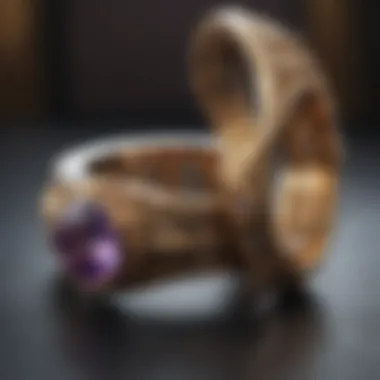
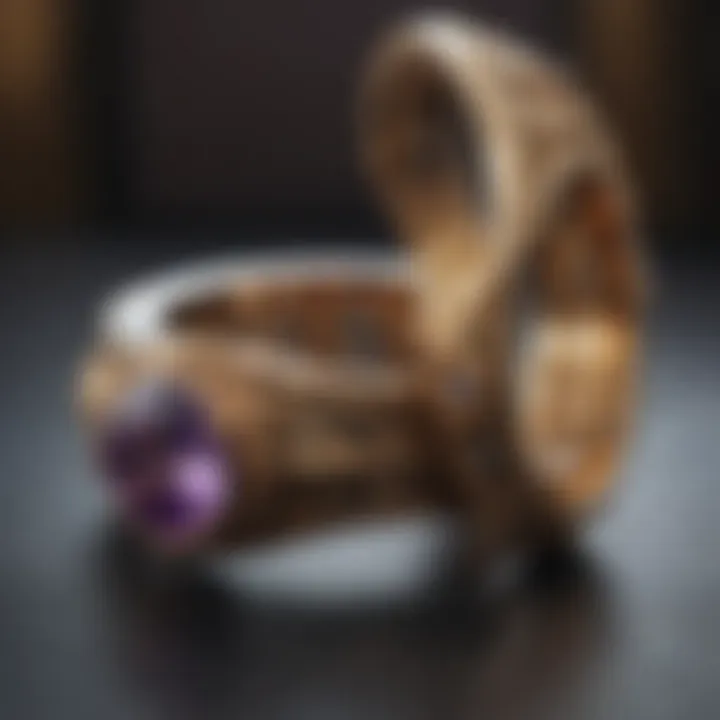
- Using Other Rings as a Guide: Take a look at your other rings. If you have a collection, gauge how they feel. Do they slide on easily without feeling loose? If you notice a notable discrepancy between the fit of different rings, your problematic ring is likely due for a size change.
- Engagement vs. Other Jewelry: For instance, the engagement ring may feel significantly tighter or looser than your wedding band or a simple band you wear regularly. This variance can be a prompt to seek resizing services, ensuring that every piece of jewelry remains in harmony on your fingers.
In summation, listening to the signals your body sends regarding ring fit is crucial. Properly fitting rings not only enhance style but also improve comfort, thus ensuring that these treasured pieces remain an enjoyable part of your daily life. If you're experiencing any of these signs, it might be time to book a consultation with a skilled jeweler.
Reasons for Sizing a Ring Down
When it comes to resizing rings, one might think it’s simply about changing a number, but the reasons go much deeper than that. Understanding why a ring needs to be sized down is crucial for anyone who finds themselves in this situation. It is not just a matter of comfort or practicality; it often ties into emotional connections, self-image, or lifestyle changes. In this section, we explore various factors that compel individuals to make this choice.
Weight Fluctuations
Life is a series of ups and downs, and one of those fluctuations can be our weight. As people's bodies change over time—whether due to diet, exercise, pregnancy, or medical conditions—rings can start feeling overly loose and impractical. A ring that once fit like a glove might turn into a slippery companion on hot days, possibly slipping right off without a second glance.
Why This Matters: Adjusting the size of a ring not only restores its snug fit but also avoids the risk of losing a sentimental piece of jewelry. Many folks have stories of rings lost at inopportune moments—perhaps while washing hands, or climbing a steep hill.
Comfort Preferences
Comfort isn't just for your shoes; it extends to your jewelry as well. A ring that digs into your skin or shifts around too much on your finger can be a source of irritation. As daily activities vary from cooking to typing to outdoor adventures, a well-fitted ring allows you to go about your life without the constant reminder that your jewelry is more of a burden than a blessing.
Additionally, persons with active lifestyles, like gardeners or athletes, find that a tighter ring can hinder their tasks. Customizing the size offers not only a better fit but peace of mind, allowing them to focus on their passions instead of adjusting their accessories.
Aesthetic Trends
Fashion is a fluid affair, and what’s trendy today might be considered passé tomorrow. Many people resize rings to keep up with aesthetic preferences. The chunky look might grab attention today, but in a few seasons, minimalism may take over. Changing one’s ring size to reflect personal style can also hint at milestones, like changes in relationships or achievements.
Embracing this cyclical nature of fashion helps individuals feel connected to not just their belongings but to their identity in the broader context.
"A ring is more than just a band of metal; it's a reflection of our journey and a touchpoint for memories."
As we navigate through life, it becomes essential to understand that resizing a ring is far from a trivial pursuit. It's interconnected with our personal narratives, emotional attachments, and our very sense of self. This concept, heavily intertwined with our day-to-day experiences, highlights that the reasons for resizing a ring can be as diverse as the individuals who wear them.
The Resizing Process
When one decides to resize a ring down, the process isn't merely a mechanical adjustment; it's a blend of art and science that requires a keen expertise. Understanding the resizing process is crucial as it ensures that the ring maintains its intended integrity and appearance, aligning with the wearer's comfort and aesthetic preferences. This process encompasses several key components—consultations, measurement techniques, and specialized tools—which all play significant roles in achieving a correct and polished result.
Consultation with a Jeweler
The first step in getting a ring resized involves a consultation with a jeweler. This meeting serves multiple purposes: it allows the jeweler to understand the wearer’s needs, assesses the current fit and structure of the ring, and discusses potential resizing options. A personal interaction can often unveil insights not freely available online or in written guides.
During this consultation, a jeweler will evaluate several factors:
- Current Ring Size: The jeweler will assess how the ring fits currently and determine the optimal new size based on wearer preference.
- Ring Style and Material: Different materials, such as gold, silver, or platinum, react uniquely to resizing.
- Design Complexity: Rings with intricate designs may necessitate particular attention to detail to maintain their aesthetic after resizing.
A proficient jeweler will clarify the potential risks, such as how resizing might affect the ring's stability or overall look. This is an essential conversation to ensure informed decision-making, and it often alleviates concerns about the process.
Measuring Techniques
After the consultation, the next step involves accurate measuring techniques to determine the precise size for resizing. A jeweler may use several methods to achieve this:
- Ring Sizer Tool: Jewelers can employ a ring sizer, which is typically a set of metal or plastic rings in various sizes. This tool allows the wearer to try on different sizes to find the perfect fit.
- Mandrel Measurement: This method involves sliding the ring onto a tapered tool called a mandrel, which indicates the size on a scale.
- Sizing Beads: Occasionally, jewelers might add temporary sizing beads to gauge comfort before proceeding with a permanent adjustment.
The measurement process is critical as even a slight miscalculation can lead to a less-than-ideal fit that could affect comfort and wearability.
Tools and Equipment Used
Jewelers utilize specialized tools and equipment throughout the resizing process. Understanding these tools can demystify the process for enthusiasts and collectors alike.
Some key tools include:
- Laser Welders: Allow for precise soldering and adjustments without ruining the integrity of the gem or the metal.
- Soldering Equipment: Used for joining metal pieces, particularly when reducing the size of the ring.
- Polishing Tools: After resizing, polished finishes restore the ring’s luster and smooth out any rough edges left from the adjustment process.
- Tongs and Pliers: Essential for manipulation during resizing, ensuring dexterity and control, especially with delicate designs.
"Proper tools in skilled hands ensure that the results will not just meet expectations but exceed them."
In short, the resizing process consists of thoughtful consultations, precise measurements, and expert handling with the right tools. Taking care at each stage is fundamental to ensuring that the resized ring not only fits like a glove but also retains its charm and integrity, which is essential for any jewelry enthusiast.
Methods for Sizing Down Rings
When it comes to altering the size of a ring, knowing the various methods available is crucial. Each approach presents its own advantages and challenges, and understanding these can ensure you make the best choice suited to your needs. Sizing down is not just about making the ring fit better but also about preserving the ring's beauty and composition. From intricately designed pieces to simple bands, the resizing methods can significantly affect how the ring wears and looks.
Soldering Techniques
Soldering remains one of the most common techniques jewlers use to resize rings. In this method, the jeweler essentially cuts the ring at a designated spot and removes a small section. This cut is then soldered back together after achieving the desired size. A key benefit of this method is its effectiveness on various types of metal, allowing various rings to be resized.
However, a jeweler must be highly skilled. Poor soldering can lead to weak points or visible marks. Moreover, not all metals behave the same under heat. Precious materials like platinum require particular attention due to their unique properties.
"A good solder job maintains the integrity of the ring and keeps its aesthetic appeal."
Metal Removing Process
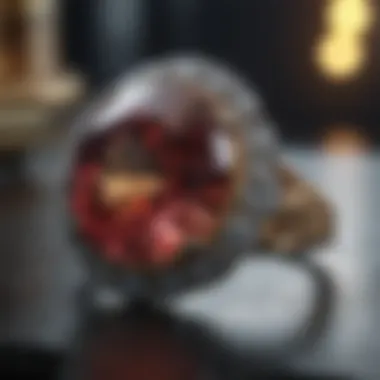
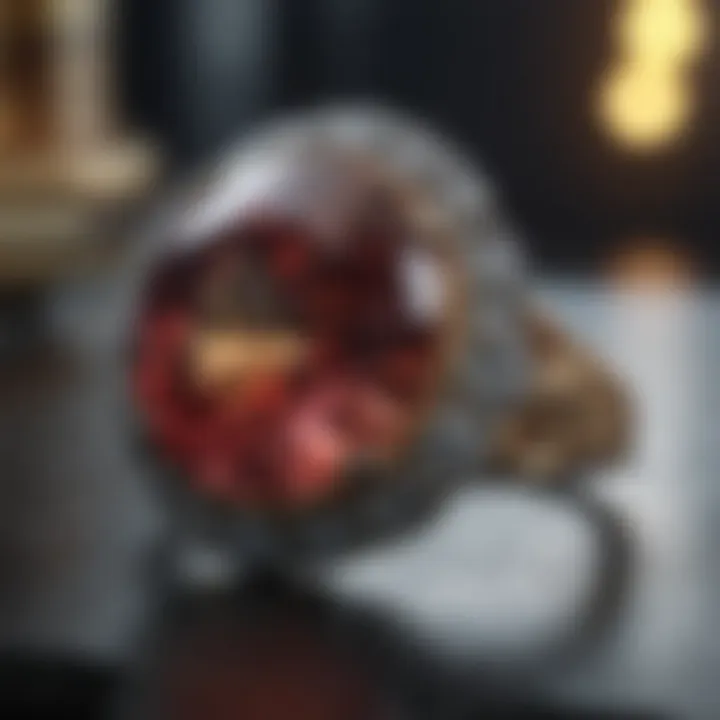
Another method utilizes a metal removing process. This technique involves carefully stripping away metal from the ring’s inner circumference. It’s a less invasive approach than soldering, ideal for rings that are only slightly too large. Removing metal might sound simple, but it requires precision; even a tiny miscalculation can throw off the overall balance and shape of the ring. Jewelers often use specialized tools for this, ensuring they remove just the right amount without compromising the ring's design.
The primary advantage of this method is that it preserves the existing solder points, meaning the ring's integrity stays intact. Moreover, since it doesn’t require rejoining pieces, the chance of solder marks showing is lower. Still, careful measurement is crucial in this process, as it's essential to gauge how much metal to remove without making the ring too tight.
Adjustments for Gemstone Settings
Gemstone settings require special consideration during resizing. If a ring features intricate stone arrangements or valuable gems, jewelers must account for their position and security in relation to resizing. The adjustment often involves adapting the prong settings or even repositioning stones to ensure they sit snugly after the ring shrinks.
In some cases, stones may need to be temporarily removed while the resizing occurs to prevent any potential damage or instability. This additional step often adds both time and cost to the procedure. However, it’s an essential measure to protect the integrity of the gemstones, particularly in rings with larger or heavier stones, which can shift and cause issues during resizing.
Having a skilled jeweler who understands the nuances of gemstone settings is paramount. They must have both the expertise and tools to ensure that the gemstones not only hold their place post-adjustment but also maintain their visual appeal without causing any cracks or chips.
In summary, understanding the methods for sizing down rings bridges the gap between mere aesthetic adjustments and thoughtful craftsmanship. Each method comes with its pros and cons, requiring careful consideration based on the ring's material and design. This knowledge equips jewelry enthusiasts, collectors, and designers with the tools to make informed decisions.
Challenges in Sizing Down
Understanding the challenges involved in resizing a ring down to a smaller size is crucial for anyone considering this kind of alteration. Jewelry resizing is not just a simple matter of cutting and rejoining; it presents several intricacies that the wearer should be aware of. These complexities can affect the overall success of the resizing process, the longevity of the ring, and even the integrity of the gemstones set within it. Recognizing these challenges can help individuals make informed decisions and ensure they achieve the best possible outcomes.
Material Variations
One of the first hurdles to tackle when resizing a ring down is dealing with the material variations. Rings can be made from various metals, including gold, silver, platinum, and even titanium. Each of these materials has different properties that can influence how they respond to resizing. For instance, gold and platinum are malleable and easier to work with than titanium, which can be more challenging to adjust without damaging the structural integrity.
Additionally, the metal type plays a significant role in the techniques that can be applied. If a person owns a ring with a mix of materials—for example, a gold ring with a platinum setting—the resizing process can become even trickier. Jewelers must have a keen understanding of how these metals will behave when heated, whether they can be welded together easily, and how to maintain their luster post-resizing.
Intricate Designs
Another challenge that often arises in the resizing process is the presence of intricate designs on the ring. Rings with detailed engravings, filigree, or unique sculptural elements can be difficult to resize without compromising those artistic features. A skilled jeweler will need to navigate the added complexity of ensuring that the beauty of the design remains intact while still achieving a proper fit.
In some cases, resizing such a ring could change its original aesthetic. This is something every owner should consider. A delicate engraving might be lost in the process, or it could unintentionally alter the balance of the piece, leaving it looking uneven or off-kilter.
Impact on Stone Security
Lastly, there’s the impact on stone security that must not be overlooked. Gemstones set in rings can be secured through various methods, each contributing an element of stability. When resizing a ring, the movement of the metal can potentially loosen these stones. If the gemstone becomes loose during resizing, it can lead to further complications, including the risk of loss.
It’s vital to discuss with the jeweler how the resizing process will incorporate the need for maintaining the security of the stones. They may need to reseat or even replace some stones to ensure that nothing shifts during the resizing. Always remember: preserving the integrity of those precious stones is just as important as adjusting the metal itself.
"Understanding the complexities of ring resizing—not just the size, but also the materials and designs—ensures that you’re making conservation a priority alongside aesthetic changes."
With these challenges in mind, planning for a resizing requires more than just knowing one’s size. It’s about ensuring that all elements come together harmoniously to create a seamless transition without sacrificing beauty or safety.
Impact on Gemstone Integrity
Understanding the integrity of gemstones post-resizing is crucial for anyone considering having a ring sized down. This aspect cannot be overlooked, especially for pieces that carry emotional value or represent significant financial investment. The resizing process involves both meticulous craftsmanship and a keen understanding of the materials involved. Therefore, how a gemstone is affected can determine its long-term beauty and value.
Evaluating how secure a gemstone is after resizing is not just part of the jeweler’s job; it’s an integral part of ensuring the ring remains safe for daily wear. If a gemstone shifts, it can lead to potential loss or damage that might not be immediately visible. Moreover, some gems are more vulnerable than others, which leads to varying degrees of risk depending on the stone's characteristics and the resizing method employed.
Evaluating Gemstone Security Post-Resizing
Once the ring has been resized, an essential step involves assessing the security of the gemstone. A jeweler typically checks for several factors:
- Tightness of Settings: The prongs or bezels holding the gemstone should fit snugly around the stone. A loose fit increases the risk of the stone coming out, which is a nightmare for any jewelry lover.
- Alignment: Proper alignment ensures the stone sits correctly in its setting. Misalignment can ruin the visual appeal and might lead to wear on the gemstone’s edges.
- Signs of Damage: After the resizing process, it’s prudent to examine for any signs of cracking or chipping. Sometimes, the processes involved can inadvertently stress a gemstone, especially if it wasn’t adequately protected.
To mitigate any risks, it is advisable to have the ring inspected by a skilled jeweler after resizing. They can confirm that everything is in its proper place and functioning as it should.
Quick Tip: If you notice any changes in how the gemstone appears or feels, don’t wait—consult a jeweler immediately.
Potential Damage Risks
The resizing process does come with its set of risks that could jeopardize the integrity of the gemstone. Here are a few concerns to keep in mind:
- Thermal Shock: Some resizing methods may involve heat. If not applied carefully, extreme fluctuations in temperature can lead to cracks in certain gems, especially those that are more delicate, like opals or emeralds.
- Mechanical Stress: The actual manipulation of the metal can inadvertently apply pressure to the stones, which may lead them to become dislodged or even crack.
- Poor Craftsmanship: Not all jewelers hold the same standard of quality. An inexperienced person might not properly secure the gemstone during the resizing process, leading to permanent damage.
By weighing these factors, individuals can make informed decisions about the best course of action when it comes to resizing their rings. Whether it’s a cherished family heirloom or a modern statement piece, maintaining gemstone integrity after resizing is key to preserving its beauty and value.
Cost Considerations
When it comes to resizing a ring, especially making it smaller, costs can vary widely. Before diving into the costs involved, it's important to recognize that the final price isn't just a matter of the jeweler's base rate; several elements come into play. Understanding these factors can help you better prepare your budget and expectations.
The cost of resizing a ring is essential to the overall experience. After all, no one enjoys the feeling of being blindsided by unexpected expenses. It's also about making informed decisions; knowing potential costs helps you evaluate the value of the resizing against your own financial situation. This part of the process can save you from future regrets and financial headaches.
Factors Affecting Pricing
A variety of aspects can influence the final price of resizing a ring. Here are some notable ones:
- Material Type: Different metals carry different price tags. For example, resizing a gold ring might be less expensive than resizing a platinum one due to the material's density and overall workability.
- Design Complexity: Rings with intricate designs or multiple stones often require more time and skill to resize. Thus, they may come with a premium.
- Size Reduction: The extent of resizing can also influence the cost. A small size reduction might be straightforward, whereas a larger adjustment may involve more extensive work.
- Jeweler Expertise: Experienced jewelers with a reputable background may charge more, but their skill could lead to better results—and possibly save you money in the long run by avoiding redoing work.
- Location: Geographical factors also take a toll on pricing. High-demand urban areas might have higher labor costs, while smaller towns might offer more competitive pricing.
Estimates and Quotes
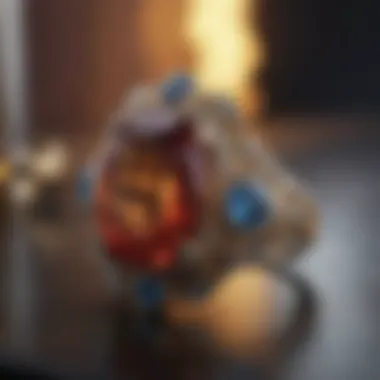
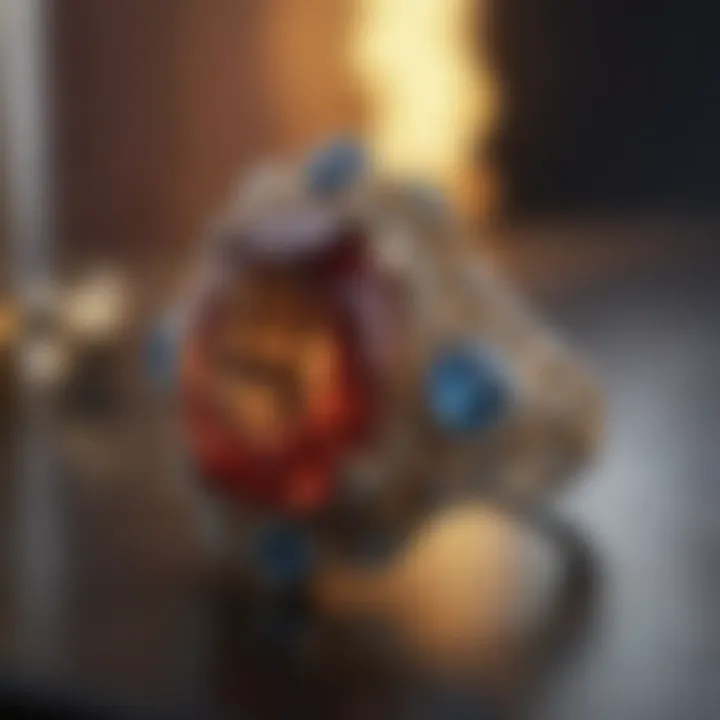
Getting an accurate estimate upfront is essential to avoid surprises later on. Many jewelers provide initial quotes, either over the phone or in-person, offering a ballpark figure based on the factors previously mentioned. Here’s how to navigate this stage effectively:
- Ask for Detailed Estimates: When consulting jewelers, request detailed breakdowns of the quoted prices. This approach helps identify potential hidden charges and gives a clearer understanding of costs.
- Compare Multiple Quotes: Don't hesitate to shop around. Getting quotes from different jewelers can reveal a broad range of pricing options and services. Ensure that you are comparing apples to apples—make sure the quotes cover the same types of services and potential adjustments.
- Consider Repairs or Adjustments: Sometimes, you may find that the resizing process reveals the need for additional repair work. Discuss these possibilities with your jeweler and factor those potential costs into your overall budget.
- Inquire About General Fees: Some jewelers may have any base service fee that applies regardless of the size adjustment. Knowing this beforehand can help you gauge the total cost more accurately.
"A clear understanding of what goes into the pricing helps to better navigate the resizing journey, ultimately leading to a more satisfying experience."
In sum, grasping the cost considerations surrounding ring resizing not only helps with your immediate financial planning but also fosters a deeper relationship with your chosen jeweler. By knowing what affects pricing and how to gather estimates, you can ensure clarity and better decision-making in this delicate process.
Choosing the Right Jeweler
Selecting the right jeweler for resizing your ring is paramount to ensure that the process is executed with precision and care. A skilled jeweler doesn’t just perform the task at hand; they safeguard the integrity of the design and stones while ensuring a perfect fit. Getting this step wrong can be costly, both emotionally and financially. An inexperienced jeweler may not only deliver subpar results but can potentially damage the ring, making it crucial to get this choice right.
Researching Jewelers
When it comes to researching jewelers, it’s vital to gather as much information as possible. Start by asking friends and family for recommendations. Often, personal experiences tell more than online reviews ever could. Here are some steps to consider in your research:
- Check Online Reviews: Websites like Yelp and Google Reviews can offer insights into customer experiences. Pay attention to feedback related specifically to ring resizing.
- Social Media Presence: Look for jewelers on platforms like Facebook and Instagram. Their work often speaks volumes - if you see a steady stream of resizing examples, it might be a good sign.
- Membership in Professional Organizations: Membership in groups like the American Gem Society can indicate a professionalism and commitment to quality that set a jeweler apart from the rest.
Once you have your list, further narrow it down by visiting their shops. This gives you the chance to observe how they interact with customers, assess the cleanliness of the workspace, and more importantly, allows you to ask specific questions.
Evaluating Credentials and Experience
Once you've shortlisted several jewelers, delving into their credentials and experience is crucial. A few things to keep in mind include:
- Ask About Training and Certifications: Jewelers with certifications from recognized institutions have likely undergone rigorous training. It's a good way to measure someone's ability.
- Years of Experience: Don't hesitate to ask how long they've been in the business. Experience can carry weight in the quality of service you receive.
- Portfolio Review: A good jeweler should have a portfolio of past work ready for viewing. If they are proud of their skills, they won’t shy away from showing you what they can accomplish.
- Specialization: Some jewelers may specialize in specific types of jewelry or materials. If your ring has intricate settings or is made from a unique metal, it’s best to choose someone who has dealt with similar items before.
"Choosing a jeweler is not just about finding someone who can resize your ring; it’s about finding an artisan who respects the piece as much as you do."
Post-Resizing Care
Caring for a ring after it has been resized is an essential step that often gets overlooked. Once the resizing process is complete, it’s not just about fitting the ring on your finger; it’s also about ensuring its integrity and maintaining its appearance. Proper care can prolong the lifespan of the jewelry and keep it looking its best. Here is a closer look at why post-resizing care matters, along with some essential practices you should consider.
Recommended Maintenance Practices
Maintaining a resized ring involves several practices that go beyond simple cleaning. Here’s a detailed breakdown of practices to ensure that your ring stays in tip-top shape:
- Regular Cleaning: Use a gentle solution of warm water and mild soap to clean your ring, especially if it lost some of its shine during the resizing process. Avoid harsh chemicals that can wear down the metal or damage gemstones.
- Dry and Store Properly: After cleaning, make sure to dry your ring with a soft cloth. Store it in a lined jewelry box, separate from other pieces to prevent scratches.
- Avoid Wearing During Activities: It's wise to remove your ring during strenuous activities like exercising or household chores. This prevents any unintentional bending or stress on the resized area.
- Limit Exposure to Chemicals: Everyday items like lotions, perfumes, or cleaning supplies could harm your ring's material. Consider putting on your ring after applying any product to your hands.
These practices not only help in preserving the look of your ring but also maintain its structural integrity after resizing.
Regular Inspections
Regularly inspecting your resized ring is key to ensuring it remains secure and visually appealing. Here’s what to look out for during your inspections:
- Check for Loose Stones: Take a moment to examine the gemstones. Ensure none have loosened during the resizing process. Gently shake your ring or tap it to listen for any movements. If something seems off, consult a jeweler immediately.
- Inspect the Sizing Area: Pay special attention to the area where resizing occurred. Check for any visible signs of discomfort while wearing or any noticeable gaps in the seam that were adjusted.
- Observe for Wear and Tear: Watch out for scratches, dents, or changes in the ring's color, especially for colored metals. Any significant changes may need professional attention to prevent further damage.
"A little bit of routine care can go a long way in ensuring your piece of jewelry remains a cherished accessory for years to come."
By incorporating regular inspections into your routine, you can catch potential issues early before they become costly repairs. Overall, meticulous attention to post-resizing care can make your beloved ring a lasting part of your wardrobe, celebrating its new fit without sacrificing its initial beauty.
Emotional Considerations
Navigating the world of jewelry isn’t just about aesthetics or material worth; it involves significant emotional dimensions as well. When talking about resizing a ring, a critical factor to consider is the transient and often poignant attachments people form with their jewelry. Rings, in particular, often embody cherished memories, profound commitments, and personal milestones—echoing engagements, weddings, or family legacies.
One of the primary aspects of these emotional considerations is the sentimental value of rings, which can transform a simple piece of jewelry into something much more meaningful. As a person’s life evolves, so too can their relationship with their jewelry. Rings may become loose due to weight fluctuations or lifestyle changes, which doesn’t just present a practical problem but affects the deep-seated feelings tied to them. If a ring is difficult to wear, it might be relegated to a drawer instead of taking its rightful place on a finger, impacting one’s connection to that special moment it represents. So resizing becomes a necessary step, helping individuals to reconnect with those memories embodied in the ring.
Moreover, rings are often an extension of one’s personal branding and identity—a way in which they express themselves in everyday life. A ring that fits well can enhance confidence and ensure that the piece is showcased optimally. When it no longer fits as it should, it can lead to discomfort, not just physically but emotionally. Resizing a ring isn’t merely about adjusting its diameter; it’s an opportunity to reclaim that part of oneself that may feel lost. The act of getting a ring resized invites the wearer to ponder their journey, reflecting on who they are and the role their jewelry plays in that narrative.
In summary, the emotional landscape surrounding ring resizing is layered and complex. It touches on the importance of memories cherished, personal identities expressed, and the significance of connections maintained through jewelry. Resizing can help restore these connections, allowing individuals to carry their stories—both past and present—wherever they go.
"Jewelry is like a personal photograph; it holds memories that shape who we are."
As individuals take steps towards resizing their rings, keeping these emotional implications in mind can add depth to the decision-making process, fostering a greater appreciation for what each piece represents.
Ending
Resizing a ring down to fit comfortably is a significant process that blends both artistry and technical skill. The journey to a perfectly sized ring is not just about the physical adjustment; it encompasses a range of emotional and practical considerations. One must appreciate that each resizing instance carries its unique narrative, intertwined with personal sentiments and identity, especially when the ring signifies a cherished memory or a milestone.
Summary of Key Points
In summarizing, several key elements emerge as crucial:
- Understanding Size Alterations: It's vital to recognize how a ring's fit can change over time due to various factors, including lifestyle and personal changes.
- Reasons for Sizing Down: Knowing when to resize involves being aware of discomfort and the evolving comfort preferences that might affect daily wear.
- The Resizing Process: Engaging with a skilled jeweler can make all the difference. Techniques like soldering and metal removal must be applied with precision to ensure the ring's integrity.
- Challenges Encountered: Every resizing comes with its hurdles, including dealing with intricate designs and ensuring gemstone security, which necessitates a careful approach.
- Cost Considerations: Understanding the factors affecting prices, such as materials and techniques used, helps in budgeting for the service effectively.
- Post-Resizing Care: Regular maintenance is essential to keep the resized ring in the best condition, ensuring long-lasting beauty and wearability.
This comprehensive understanding arms gemstone enthusiasts and collectors alike with the knowledge to engage confidently in the resizing process.
Final Thoughts on Resizing Rings
The impact of resizing can run deeper than mere physical comfort. For many, rings hold tremendous sentimental value. Whether it’s a family heirloom or a token of love, resizing offers a way to maintain that connection while adapting to personal changes. Plus, enduring trends and styles can affect how one perceives their jewelry over time.
It is essential to approach the resizing conversation thoughtfully and with clarity. Open dialogue with the jeweler about the intended outcomes and concerns will foster optimal results. Look for jewelers who prioritize both technique and emotional sensitivity in their work, as this balance is what will enhance the overall satisfaction with the resized piece.
Ultimately, resizing a ring down need not be a daunting task. With the right insights and a knowledgeable professional, this process can be a seamless transition, ensuring that the ring continues to be a meaningful accessory for years to come.



